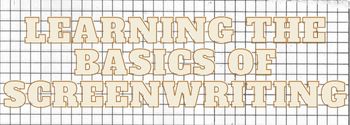There are a few key things to remember when formatting a play script. First, play scripts are written in a specific format that helps to convey the story and the dialogue of the characters. Second, there are specific conventions that need to be followed when formatting a play script.
The first thing to remember when formatting a play script is the layout of the document. Play scripts are typically written in 12 point font, with 1 inch margins on all sides. The document should be single-spaced, with no extra spacing between the lines.
The next thing to remember is the formatting of the text. Play scripts are written in Courier New font, which is a monospaced font that helps to keep the text aligned properly. All dialogue should be written in quotation marks, and the name of the character speaking should be written above the dialogue. Scene headings should be written in all capital letters, and should be centered on the page.
There are also specific conventions that need to be followed when formatting a play script. Each scene should begin on a new page, and the scene number should be written in the top right corner of the page. The name of the play should be written in the top left corner of the first page, and the name of the author should be written at the bottom of the page.
How do I write my own play script?
There is no one answer to this question, as writing a play script is a very personal process. However, there are a few things that you can do to make the process easier.
First, start by brainstorming ideas. What are some stories that you are interested in telling? What characters would you like to see on the stage? Once you have a few ideas in mind, start outlining the plot. This can help you to see the overall structure of your play and determine what scenes you need to write.
Once you have a basic outline, start writing your scenes. Be sure to focus on character development and dialogue. The best plays are the ones that are well-written and realistic.
Finally, once you have a completed play, it’s important to get feedback from other people. Ask friends and family to read your play and give you feedback. This can help you to improve your script and make it the best it can be.
How do you format a play write?
When formatting a play, it is important to keep in mind the basic layout of a play. There are three main acts in a play, with each act containing a number of scenes. Each scene is further divided into a number of lines.
The layout of a play is as follows:
1. Heading
This should include the title of the play, the author’s name, and the date of the performance.
2. Scene Headings
Each scene should be numbered and have a brief description of what is happening in the scene.
3. Character Names
List the name of each character in the scene, along with their role.
4. Dialogue
This should be written in quotation marks and should be formatted according to the rules of grammar and punctuation.
5. Stage Directions
These should be written in italics and should give a brief description of what is happening on stage.
What are the 5 basic elements of a play script?
The 5 basic elements of a play script are the following:
1. The characters – who are the people in the play? 2. The setting – where and when does the play take place? 3. The plot – what happens in the play? 4. The dialogue – what do the characters say to each other? 5. The stage directions – what do the characters do and where do they go?
What are 3 features in a play script?
A play script is a document that outlines the specifics of a play, including the setting, characters, dialogue, and stage directions. There are three key features that all play scripts share: dialogue, stage directions, and blocking.
Dialogue is the spoken words of the characters in a play. Stage directions are instructions for the actors and technicians, such as where to move and what to do. Blocking is how the actors physically move on stage.
Dialogue is the most important part of a play script. It is what brings the characters to life and allows the audience to understand their motives and relationships. Good dialogue is clear, concise, and interesting to read.
Stage directions are also important, as they help to create a visual picture for the audience. They can include information about the setting, the props that are used, and the actions of the characters.
Blocking is the final key element of a play script. It is the way in which the actors move on stage, and it can be used to create atmosphere or to convey emotion.
How long is a 10 minute play script?
A 10 minute play is just that: a play that is 10 minutes long. This doesn’t include any time for set up or breakdown, so the play itself is actually closer to 8 or 9 minutes long.
There are a few things to keep in mind when writing a 10 minute play: first, you need to make sure that every scene is necessary and that each one moves the plot forward. Second, you need to make sure that each character has a strong arc and that their dialogue is meaningful. Finally, you need to make sure that the ending is satisfying – you don’t want the audience to feel like they just wasted their time.
With that in mind, here are a few tips for writing a successful 10 minute play:
1. Start with a strong hook. The first few minutes of your play are crucial, so make sure that you start with a scene that grabs the audience’s attention.
2. Keep your scenes short and to the point. Don’t waste time on pointless dialogue or meandering scenes.
3. Make sure your characters are likable and relatable. The audience needs to care about what happens to them.
4. Think about your ending. The last few minutes of your play are important, so make sure that the ending is satisfying and makes sense.
How do you structure a play?
How do you structure a play? This is a question that many aspiring playwrights ask themselves. While there is no one right answer, there are a few basic principles that can help you create a well-structured play.
The first thing to keep in mind is that a play is not a novel. It has a different structure and purpose. A play is meant to be performed, not read. As a result, it should be written in a way that is easy for actors to understand and performers to perform.
Another key consideration is the length of a play. A play should not be too long or too short. It should be long enough to develop the characters and the story, but not so long that it becomes tedious to watch.
There are three basic elements that make up the structure of a play: exposition, complication, and resolution.
The exposition is the beginning of the play, where the characters and setting are introduced. The complication is the middle of the play, where the story unfolds and the conflict is resolved. The resolution is the end of the play, where the characters return to their original state.
Within these three elements, there are also three basic structures that playwrights can use: linear, circular, and episodic.
The linear structure is the most common type of structure. It follows a straight path from beginning to end. The circular structure is where the story circles back to the beginning and repeats. The episodic structure is where the story is divided into small episodes or scenes.
There is no one right way to structure a play. It is important to experiment and find the structure that works best for your story. However, following the basic principles outlined above can help you create a well-structured play that is easy to understand and perform.
What are the rules for writing a play script?
A play script is a written document that outlines the dialogue and stage directions for a play. It is important to follow the proper format for play scripts so that the play can be easily read and understood by the actors and directors.
The first page of a play script should include the play’s title, author, and the scene numbers and act numbers. The font should be large and easy to read. The rest of the play script should be written in 12 point font.
Play scripts are typically written in a neutral tone, without using first or second person point of view.stage directions should be written in italics.
Dialogue should be written in quotation marks and should be easy to read. Each character’s dialogue should be separated by a blank line.
Here is an example of how a play script should be formatted:
Theatre by Jane Smith Scenes 1-5, Act 1
FADE IN:
INT. THEATRE – DAY 1. JOHN and JANE are on stage, rehearsing a scene. 2. JOHN 3. JANE 4. JOHN 5. JANE
END OF SCENE 1
INT. THEATRE – DAY 1. JOHN and JANE are on stage, rehearsing a scene. 2. JOHN 3. JANE 4.
JOHN 5. JANE
John: “Hey, have you seen my phone?” Jane: “No, I haven’t seen it. Did you check your locker?” John: “Yeah, I checked my locker. I don’t know where it could be.” Jane: “Maybe you left it at home.” John: “No, I didn’t leave it at home. I’m sure I had it when I left.” Jane: “Well, maybe it fell out of your pocket.” John: “I don’t think so. I would have noticed if it fell out.” Jane: “Well, maybe it’s in the theatre somewhere.” John: “I’ll check backstage.”
John exits the stage.
Jane: “I hope he finds his phone.”
INT. BACKSTAGE – DAY John is looking for his phone.
John: “Where could my phone be?”
How many pages is a 10 minute play script?
There is no definitive answer to this question as it can vary depending on the formatting and complexity of the play script. However, a 10 minute play script is likely to be between 3 and 5 pages long.
How do you format a play title?
If you’re looking to format a play title for a bibliography or other document, there are a few things you need to keep in mind. Play titles are typically italicized, and the name of the author is typically underlined or put in quotation marks. If the play is a collection of one-acts, the title of the collection is typically italicized and the individual play titles are typically in quotation marks. Here’s an example:
“The Complete Plays of William Shakespeare” “The Taming of the Shrew” “A Midsummer Night’s Dream” “All’s Well That Ends Well”
How do you format the end of a play?
When formatting the end of a play, there are a few things you need to keep in mind. Most importantly, you need to include the character’s name and the line of dialogue that concludes their scene. Additionally, you may want to include some other information, such as the location of the scene and the time of day.
Here’s an example of how you might format the end of a play:
CHARACTER NAME:
LINE OF DIALOGUE:
LOCATION:
TIME OF DAY:
What are the elements of play script?
Play scripts are often seen as the foundation of a theatrical production. They are the written instructions that dictate the sequence of events, as well as the dialog, for a play.
A play script contains a number of important elements, which can be divided into three categories: the exposition, the conflict, and the resolution.
The exposition is the part of the play that introduces the characters and the setting. It provides the audience with all the information they need to understand the story.
The conflict is the heart of the play, where the characters struggle against one another. It is often a struggle between good and evil, or between different ideologies.
The resolution is the part of the play where the conflict is resolved. The characters reach a final decision or solution, and the play ends with a satisfying conclusion.
What are the 5 basic elements of a script?
A screenplay or script is a written work used in the production of a film or television program. It consists of a number of elements, which are all important for the success of the project. The five basic elements of a script are:
1. The Plot 2. The Characters 3. The Dialogue 4. The Setting 5. The Style
What are the main elements of a play?
There are many elements that go into making a play, but some of the most important include the plot, characters, setting, and theme.
The plot of a play is what happens during the course of the story. It is the sequence of events that drives the action forward. The characters are the people who interact with one another and drive the plot forward. The setting is the location or environment in which the story takes place. And the theme is the main idea or message that the play is trying to communicate.
All of these elements work together to create a cohesive story. The plot provides the framework, the characters bring the plot to life, the setting provides the context, and the theme gives the story a greater meaning.
What are the 4 things that a script must have?
There are four essential elements that all scripts must have in order to be successful.
1. The first thing a script must have is a strong story. The story must be well-written and engaging, and it must hold the audience’s attention from beginning to end.
2. The second thing a script must have is good characters. The characters must be believable and well-developed, and they must resonate with the audience.
3. The third thing a script must have is strong dialogue. The dialogue must be realistic and well-constructed, and it must keep the audience engaged.
4. The fourth and final thing a script must have is good production values. The production values must be high quality and professional, and they must be able to convey the story and characters effectively to the audience.


